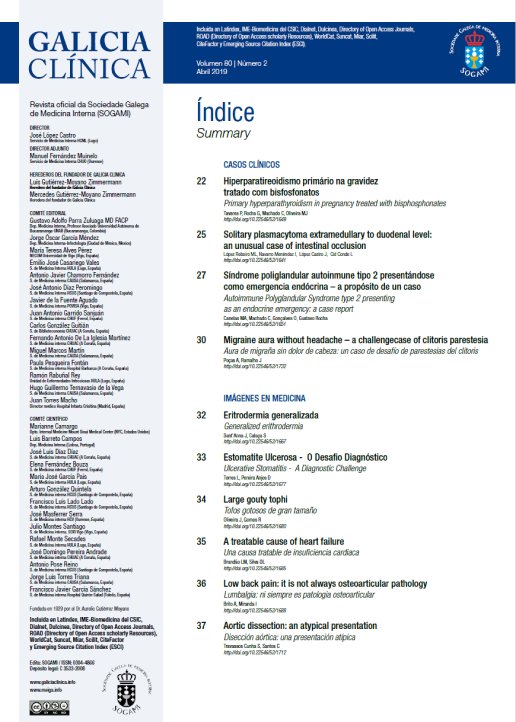Abstract
Introduction: Primary hyperparathyroidism in pregnancy is rare. Increased risk of fetal death, miscarriage, preterm delivery, preeclampsia and hypocalcemia of the neonate are potential complications. Cure is obtained with parathyroidectomy in the 2nd trimester but correction of hypercalcemia is essential.
Case presentation: We present a case of a 31-year-old woman with a history of renal lithiasis, high PTH (171.4 pg/mL), hypercalcemia (11.3 mg/dL), and hypophosphatemia (1.9 mg/dL), with no parathyroid localization in the cervical ultrasound.
Bone densitometry and scintigraphy were requested but the patient did not perform those exams because of unexpected pregnancy.
Despite strict hydration and forced diuresis, the hypercalcemia got worse and the patient became more symptomatic. Exploratory surgery was refused and therefore, medical management was explored. The patient was treated with pamidronate, with consequent normalization of serum calcium and improvement of symptoms.
A female child was born at 37 weeks of gestation without complications. The parathyroid scintigraphy with Tc99m-sestambi performed after delivery showed a focus of increased tracer uptake inferiorly to the left lobe of the thyroid gland. The patient was submitted to a radioguided parathyroidectomy. The pathological anatomy examination revealed a parathyroid adenoma.
Conclusions: The pregnancy raised difficulties in locating the anomalous parathyroid(s). After the surgical option was eliminated, the difficulty was to choose the most balanced medical treatment to control the maternal calcium levels without fetal harm. The use of loop diuretics and bisphosphonates had been shown to be effective in controlling hypercalcemia until the end of pregnancy.
© 2019 Galicia Clínica.
Complete article | Pdf article


